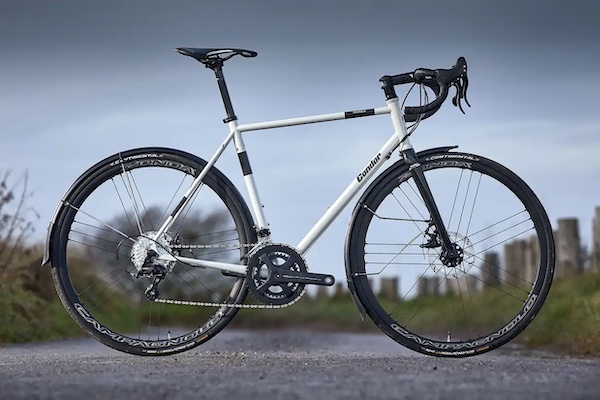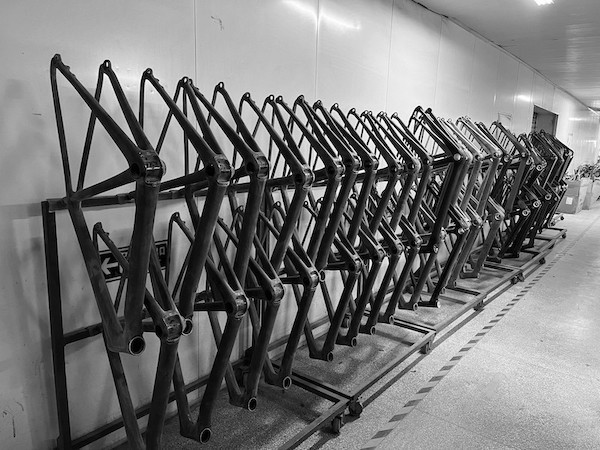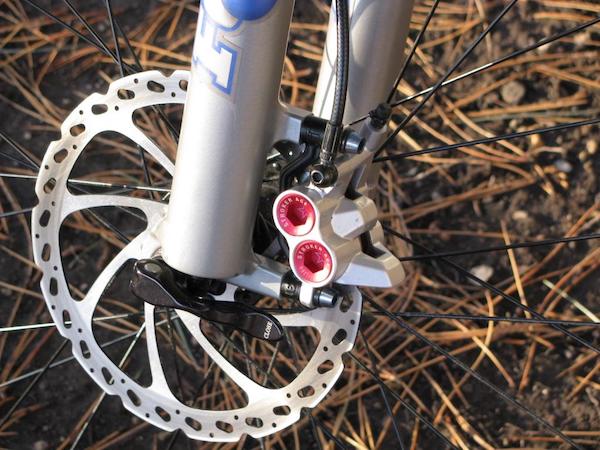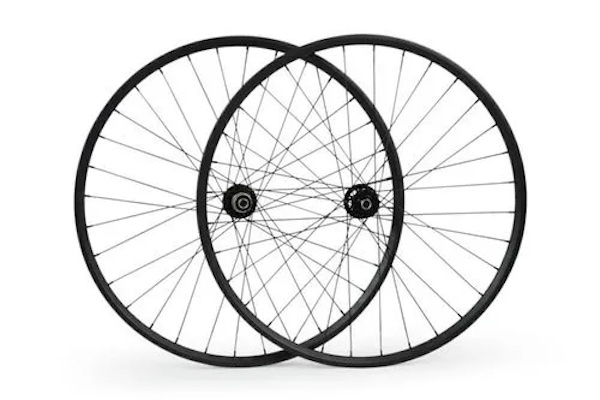Categories
New Blog
Tags
When you struggle with choosing a road bike,it is smart that you want to search some help from the specialist or experienced bicyclist.In this article, you may find out the answer.

Step 1: The type of road riding you plan
The first thing to answer is why you’re interested in a road bike – and it’s important to be honest with yourself. Is it for competitive racing and fast bunch riding, or for more gentle recreational riding to get the heart rate up? Are you looking to commute to work, or purely go out on weekends when the weather is nice? Or maybe you’re intrigued by longer rides and gravel roads, in which case, perhaps something like a gravel bike may be a better choice?
Road cycling can mean different things to many people. There’s also a great deal of variance in what your local roads may be like. Certainly riding pristine tarmac mountains in Switzerland is different to tackling backcountry roads in Australia.
To add to that not everyone shares the same fitness, flexibility, or athletic ability. The bike industry caters to almost everyone, but that doesn’t mean that every bike is right for you.
Differing roads, riding styles, and body types have all led to a great deal of diversification in the modern road bike. In the simplest sense most brands have their road bike ranges divided into three key categories:
A modern all-around race bike is the type of bike you’d often see in the alps during the Tour de France, and as a result, some people call them climber’s bikes or general classification bikes. It’s a bike that aims to balance lightweight, stiffness, comfort (sometimes), and often aerodynamics – all in the name of covering varying roads as efficiently as possible.
These bike types often feature fast handling and aggressive fits that benefit more experienced and/or athletic riders. They’ll also often feature 25 or 28 mm wide tyres and taller gearing. Almost every brand selling road bikes has a bike like this, but popular examples include the Giant TCR, Specialized Tarmac, Trek Emonda, Cannondale SuperSix, Scott Addict RC, Merida Scultura, BMC Teammachine, and Canyon Ultimate.
Sharing similar handling and fit with the all-round racer, the aero road bike often trades in absolute low weight for aerodynamic gain. These bikes are typically the most efficient choice on flat or rolling terrain, and typically a good option for more powerful riders. As most all-around race bikes have become increasingly more aero, the dedicated aero race bike has lost some appeal.
Specific examples of aero road bikes include the Trek Madone, Giant Propel, Merida Reacto, Scott Foil, Ridley Noah, and Cannondale SystemSix. This style of bike is also often considered a premium product and so won’t be suitable for more modest budgets.
The modern endurance road bike aims to take the sporty nature of the All-round racer and make it more accessible, comfortable and versatile. The fit is more relaxed, the ride is often more compliant, the gearing is lower (for easier climbing), and the steering characteristics are often less nervous, too. These are road bikes for the masses.
It’s worth noting that not all endurance road bikes are the same (likewise for road race bikes). Some are more relaxed and recreational in design, while others trend closer to race bikes.
Endurance road bikes exist at all price points, however, you’ll find that most entry-level road bike options typically trend toward being a bike of this variant.
All rounders, all-road, and how to tell them apart
While most road bikes fit into one of the three categories above, there’s certainly some clear convergence happening. Many race bikes now offer generous tyre clearance, wider gearing ranges and even some decent ride comfort to be more appealing to a larger market. A number of brands have made their all-around race bikes more like their aero racers, and even relaxed the fit and handling of these bikes, too. And as just covered, some have pushed their endurance road bikes toward gravel territory.
There are a few ways to help you cut through the marketing chaff and decipher where each bike sits. A great tool is the “trail figure” of a bike which gives an indication of how quickly it steers. The lower the number, the faster the handling. Very broadly speaking (there are many other factors involved that can impact this), a trail figure under 59 mm suggests the bike is intended to feel quick and race-like, while 60 mm and over should have the bike feeling a touch more docile.
Maximum allowed tyre clearance and stock width can be quite telling for the bike’s intended purpose too. Most modern race bikes will be equipped with 25 or 28 mm tyres, while endurance and all-road-style bikes will typically be fitted with 30-32 mm. Fender compatibility will also assist in whether the bike is made for racing or recreation. And the same goes for whether the bike has an easy-spinning sub-compact or compact crank (48/32 or 50/34 respectively), or more race-like gearing (52 or 53T big ring).
It’s also worth becoming acquainted with the bike’s stack and reach figures (covered in step three).
Step 2: The budget you want to spend
This second step will most likely be a key deciding factor in the bike you end up with. So how much are you willing (or able) to spend?
In the simplest sense spending more will get you a higher-performing bike that is lighter, likely more aerodynamic, more durable, and perhaps even more comfortable. However, there are obvious exceptions to this, and no doubt the laws of diminishing returns play strongly in the road bike world.
Below are some key elements to consider. Many of these are far larger topics that each offer a rabbit hole of research.
Frame material
Road bike frames are mostly made from one of the following 3 materials:

The estimated weight is based on my research and comparing weights of road bikes from various manufacturers. The bike’s weight also depends on the components used on the bike. The more expensive road bikes usually have better and lighter components, so their overall weight is lower.
A more modest budget is likely to keep your buying decision to an aluminium frame, or perhaps something made of steel. A bigger budget will open you up to carbon fibre or titanium. (Price ranges vary considerably from one local market to another.)
Brake type- rim brakes or disc brakes

Road bikes come with rim or disc brakes.
Rim brakes exist in many variants. But the principle is always the same – braking pads apply friction to the wheel’s rim and slow the bike.Rim brakes were pretty popular for decades, but they have had a strong competitor in the last few years – disc brakes. The advantage of rim brakes is their lower weight, easier maintenance, and lower price than disc brakes, but they are not as effective in the rain and long descents.
Mechanical disc brakes work similarly to rim brakes – a steel cable moves the pistons, creating friction that slows the bike. The advantage is that they are compatible with standard rim shifters and are easier to maintain at home. Their disadvantage is that the steel cable can wear out more quickly and break when you don’t expect it.
Hydraulic disc brakes use fluid filled in the system. As CyclingAbout explains, when you pull the brake lever, the fluid rushes down to the caliper, closing the brake pads. This type of disc brake provides braking consistency in any riding conditions. On the other hand, they are more difficult to maintain at home due to their complexity.
Rim brakes remain the lighter option and will provide you with a lighter bike for the same money. Meanwhile, disc brakes aim to offer increased stopping control (especially in wet conditions), open up clearance for wider tyres, and are fast becoming the only option on a number of popular bikes from big brands.
Wheels and Tires

After the frame, it’s likely the wheels (and tyres) that will make the biggest difference to the ride. It can take an experienced eye to tell the difference between wheels, but some key things to look for are rim width (the trend is toward rims of at least 19 mm width), a high-quality build with even spoke tensions, and reputation for hub durability (e.g. DT Swiss and Shimano).
Wheelset weight can also be a factor in how lively the bike feels. Roughly speaking, road wheel sets over 1,600 g are considered on the heavy side, and it’s common to see wheelsets over 2,000 g on entry-level bikes.
Road bikes use 700c (622 mm) wheel size. Entry-level and mid-range road bikes come with alloy wheels. High-end road bikes feature carbon wheels.
Carbon wheels are expensive, and you can always upgrade them later. So don’t worry if you can’t afford them right away.
Make sure to consider the tire width. The general rule of thumb is the wider and higher volume of the tire, the more comfort you get.According to road.cc, the common standard was 23mm tires, but it slowly changed to 25mm tires. Nowadays, road bikes are designed to fit 28mm and sometimes even wider tires.
Brakes
Shifting type and component levels
Typically the more you spend the more gears the bike will have and the smoother they will function. And as with most things in cycling, there’s an inverse relationship between component weight and price.
It’s worth noting that the frame and wheels will play a larger role in how much you enjoy the bike versus what components are bolted to it. If given the choice, invest in a better frame and wheels before going with better derailleurs and shifters.
Place of purchase
The internet age has led to a relatively new decision for bike buyers: buy from a local bike shop or do it yourself online? The former offers you hands-on service and perhaps access to a local riding community, while the latter more than likely has a price advantage.
For everyone else the hands-on experience and service a good local bike shop can provide has the potential to make a substantial difference to your enjoyment in cycling.
Budget for extras
If you’re new to cycling then be sure to budget for all the extras that are required to get pedalling. Almost all new bikes don’t include pedals, and you’ll likely also want some shoes to go with them.
Then expense of all the other must-have items will quickly creep up too: a helmet, cycling shorts/bibs, bottle cages, spares to fix a flat tyre, a pump – the list goes on.
Step 3: Fit is critical
Road cycling can be quite a fixed-position sport and you’ll tend to ride with a set posture for long periods of time. Gone are the days of a road bike being an ache to ride – you should be able to pedal without any discomfort. Get the wrong size or wrong setup though and you won’t only be uncomfortable, you may be putting yourself at risk of injury. Because of this it’s critical to ensure the bike fits you correctly.
Here it’s important to be realistic about your flexibility and athletic ability, and pick the appropriate bike. If you can’t remember the last time you touched your own toes then an aggressive race bike is likely not ideal. Endurance-style bikes are designed for the masses and most riders are likely to be most comfortable on this style of bike which offers a more relaxed riding position.
If you’re unsure of where to start then go into your local bike shop. Experienced bike shop staff will be able to advise you on the correct size bike and style for your needs.
When comparing across multiple brands it’s important to know that there are no industry standards for how bike sizes are labelled. A 54 cm frame in one brand may be equivalent to a 56 cm in another, and the same applies for those labelled with small, medium and large.
Thankfully there is a pretty good guide for how a bike will fit and compare to other bikes: stack and reach figures. These two figures remain the most robust way of comparing the actual sizing between various bikes. We have a dedicated article about the importance of stack and reach in bike sizing.
Step 4: Test ride
This final step is strongly suggested. If you can manage a ride around the block or even something longer, that’s great. However, there’s a good chance you’ll need to buy your next bike without having tested it. If this is the case then listen to opinions from people you trust.
Final Conclusion
When choosing a road bike, you need to consider your budget and riding style. These two basic factors significantly affect which road bike is right for you.
An endurance road bike to beginners is friendly. Because their more upright riding position is more comfortable than performance and aero road bikes.
Hopefully this article has set you on a path to finding the right road bike. To recap, find a bike that’s suitable for how you want to ride and make sure it fits you correctly. If you’ve got further questions, be sure to visit your local bike shop, chat to a cyclist you trust, or ask us in the comments section below. Good luck and happy riding!